Transcription factor network analysis identifies REST/NRSF as an intrinsic regulator of CNS regeneration in mice
- PMID: 35906210
- PMCID: PMC9338053
- DOI: 10.1038/s41467-022-31960-7
Transcription factor network analysis identifies REST/NRSF as an intrinsic regulator of CNS regeneration in mice
Abstract
The inability of neurons to regenerate long axons within the CNS is a major impediment to improving outcome after spinal cord injury, stroke, and other CNS insults. Recent advances have uncovered an intrinsic program that involves coordinate regulation by multiple transcription factors that can be manipulated to enhance growth in the peripheral nervous system. Here, we use a systems genomics approach to characterize regulatory relationships of regeneration-associated transcription factors, identifying RE1-Silencing Transcription Factor (REST; Neuron-Restrictive Silencer Factor, NRSF) as a predicted upstream suppressor of a pro-regenerative gene program associated with axon regeneration in the CNS. We validate our predictions using multiple paradigms, showing that mature mice bearing cell type-specific deletions of REST or expressing dominant-negative mutant REST show improved regeneration of the corticospinal tract and optic nerve after spinal cord injury and optic nerve crush, which is accompanied by upregulation of regeneration-associated genes in cortical motor neurons and retinal ganglion cells, respectively. These analyses identify a role for REST as an upstream suppressor of the intrinsic regenerative program in the CNS and demonstrate the utility of a systems biology approach involving integrative genomics and bio-informatics to prioritize hypotheses relevant to CNS repair.
© 2022. The Author(s).
Conflict of interest statement
Z.H. is a co-founder of Rugen and Myro Therapeutics. The remaining authors declare no competing interests.
Figures
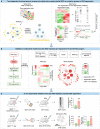
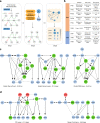
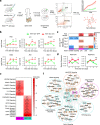
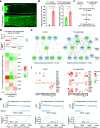
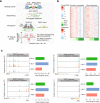

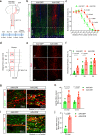
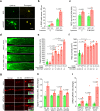
Similar articles
-
Upregulating Lin28a Promotes Axon Regeneration in Adult Mice with Optic Nerve and Spinal Cord Injury.Mol Ther. 2020 Aug 5;28(8):1902-1917. doi: 10.1016/j.ymthe.2020.04.010. Epub 2020 Apr 15. Mol Ther. 2020. PMID: 32353321 Free PMC article.
-
Comparative gene expression profiling between optic nerve and spinal cord injury in Xenopus laevis reveals a core set of genes inherent in successful regeneration of vertebrate central nervous system axons.BMC Genomics. 2020 Aug 5;21(1):540. doi: 10.1186/s12864-020-06954-8. BMC Genomics. 2020. PMID: 32758133 Free PMC article.
-
Genetic study of axon regeneration with cultured adult dorsal root ganglion neurons.J Vis Exp. 2012 Aug 17;(66):4141. doi: 10.3791/4141. J Vis Exp. 2012. PMID: 23117482 Free PMC article.
-
Extrinsic and Intrinsic Regulation of Axon Regeneration by MicroRNAs after Spinal Cord Injury.Neural Plast. 2016;2016:1279051. doi: 10.1155/2016/1279051. Epub 2016 Oct 13. Neural Plast. 2016. PMID: 27818801 Free PMC article. Review.
-
Updates and challenges of axon regeneration in the mammalian central nervous system.J Mol Cell Biol. 2020 Oct 1;12(10):798-806. doi: 10.1093/jmcb/mjaa026. J Mol Cell Biol. 2020. PMID: 32470988 Free PMC article. Review.
Cited by
-
Elk-1 regulates retinal ganglion cell axon regeneration after injury.Sci Rep. 2022 Oct 19;12(1):17446. doi: 10.1038/s41598-022-21767-3. Sci Rep. 2022. PMID: 36261683 Free PMC article.
-
Tppp3 is a novel molecule for retinal ganglion cell identification and optic nerve regeneration.Acta Neuropathol Commun. 2024 Dec 29;12(1):204. doi: 10.1186/s40478-024-01917-6. Acta Neuropathol Commun. 2024. PMID: 39734233 Free PMC article.
-
Optic nerve diseases and regeneration: How far are we from the promised land?Clin Exp Ophthalmol. 2023 Aug;51(6):627-641. doi: 10.1111/ceo.14259. Epub 2023 Jun 15. Clin Exp Ophthalmol. 2023. PMID: 37317890 Free PMC article. Review.
-
Bridging the gap of axonal regeneration in the central nervous system: A state of the art review on central axonal regeneration.Front Neurosci. 2022 Nov 9;16:1003145. doi: 10.3389/fnins.2022.1003145. eCollection 2022. Front Neurosci. 2022. PMID: 36440273 Free PMC article. Review.
-
Neuro293: A REST-knockout HEK-293 cell line enables the expression of neuron-restricted genes for the high-throughput testing of human neurobiology and the biochemistry of neuronal proteins.Biol Methods Protoc. 2025 May 10;10(1):bpaf036. doi: 10.1093/biomethods/bpaf036. eCollection 2025. Biol Methods Protoc. 2025. PMID: 40575147 Free PMC article.
References
-
- Cajal, S. R. Cajal’s degeneration and regeneration of the nervous system. (History of Neuroscience, 1991).
Publication types
MeSH terms
Substances
Grants and funding
LinkOut - more resources
Full Text Sources
Medical
Molecular Biology Databases

